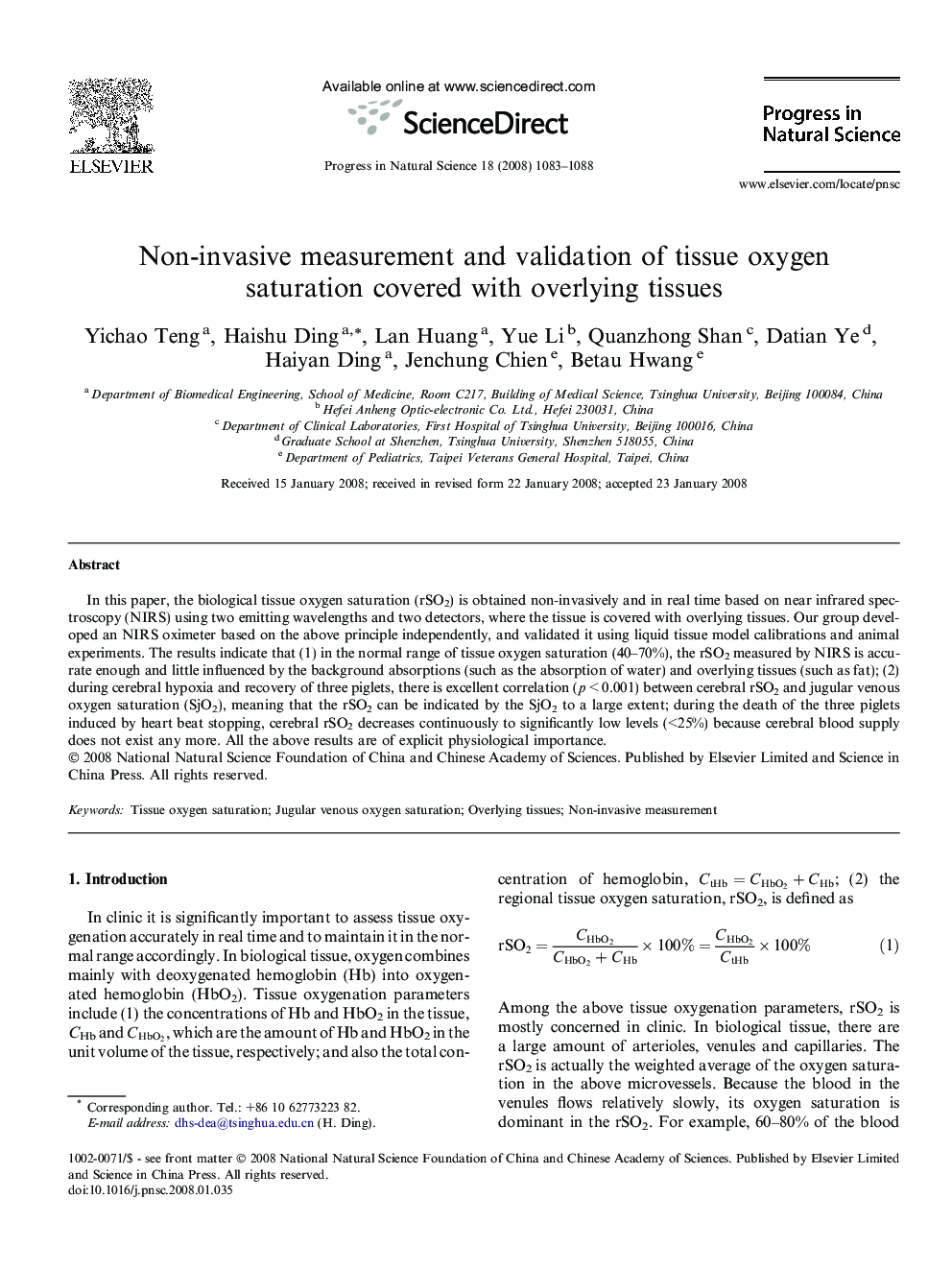| Article ID | Journal | Published Year | Pages | File Type |
|---|---|---|---|---|
| 1548823 | Progress in Natural Science: Materials International | 2008 | 6 Pages |
In this paper, the biological tissue oxygen saturation (rSO2) is obtained non-invasively and in real time based on near infrared spectroscopy (NIRS) using two emitting wavelengths and two detectors, where the tissue is covered with overlying tissues. Our group developed an NIRS oximeter based on the above principle independently, and validated it using liquid tissue model calibrations and animal experiments. The results indicate that (1) in the normal range of tissue oxygen saturation (40–70%), the rSO2 measured by NIRS is accurate enough and little influenced by the background absorptions (such as the absorption of water) and overlying tissues (such as fat); (2) during cerebral hypoxia and recovery of three piglets, there is excellent correlation (p < 0.001) between cerebral rSO2 and jugular venous oxygen saturation (SjO2), meaning that the rSO2 can be indicated by the SjO2 to a large extent; during the death of the three piglets induced by heart beat stopping, cerebral rSO2 decreases continuously to significantly low levels (<25%) because cerebral blood supply does not exist any more. All the above results are of explicit physiological importance.
